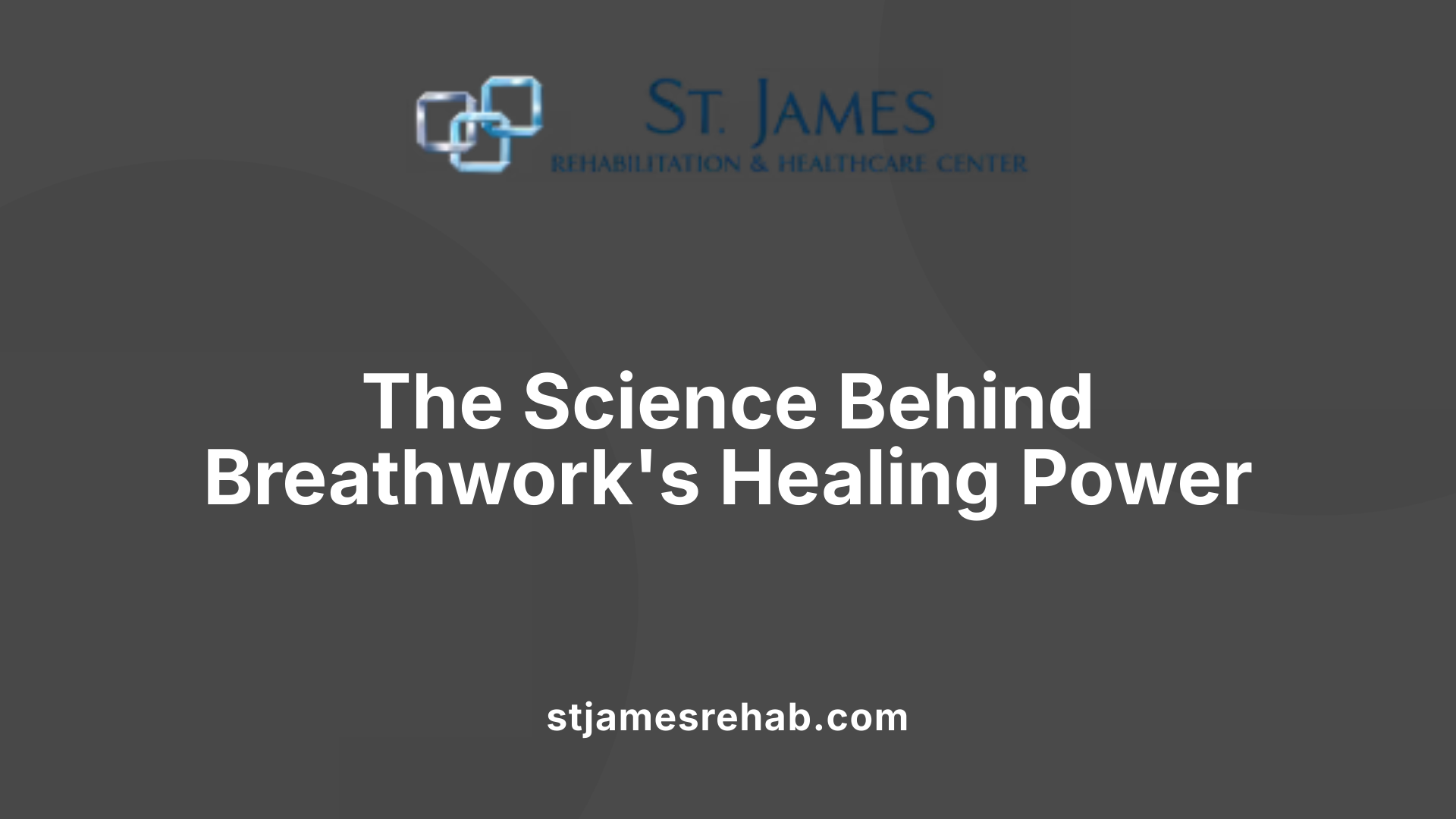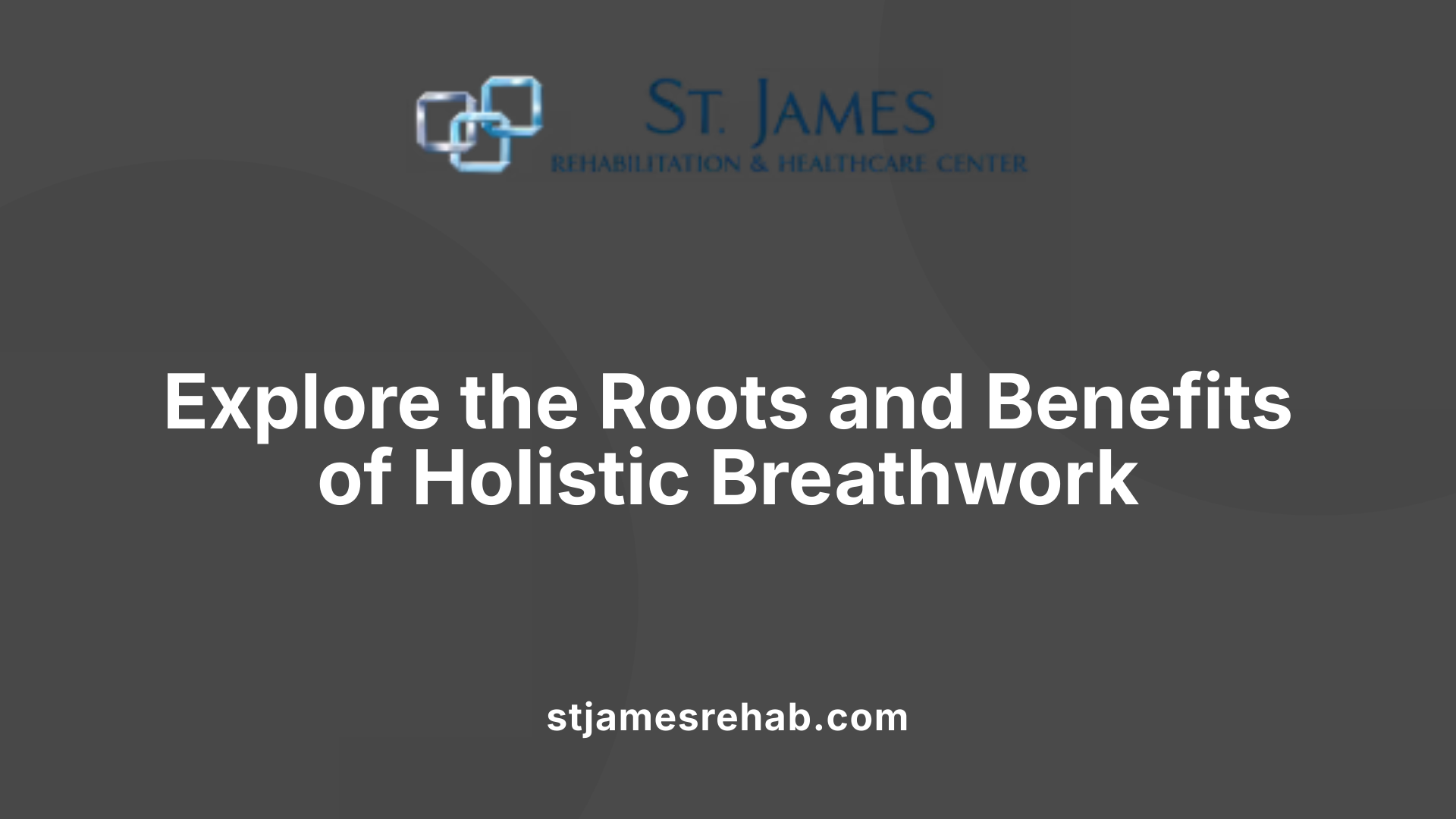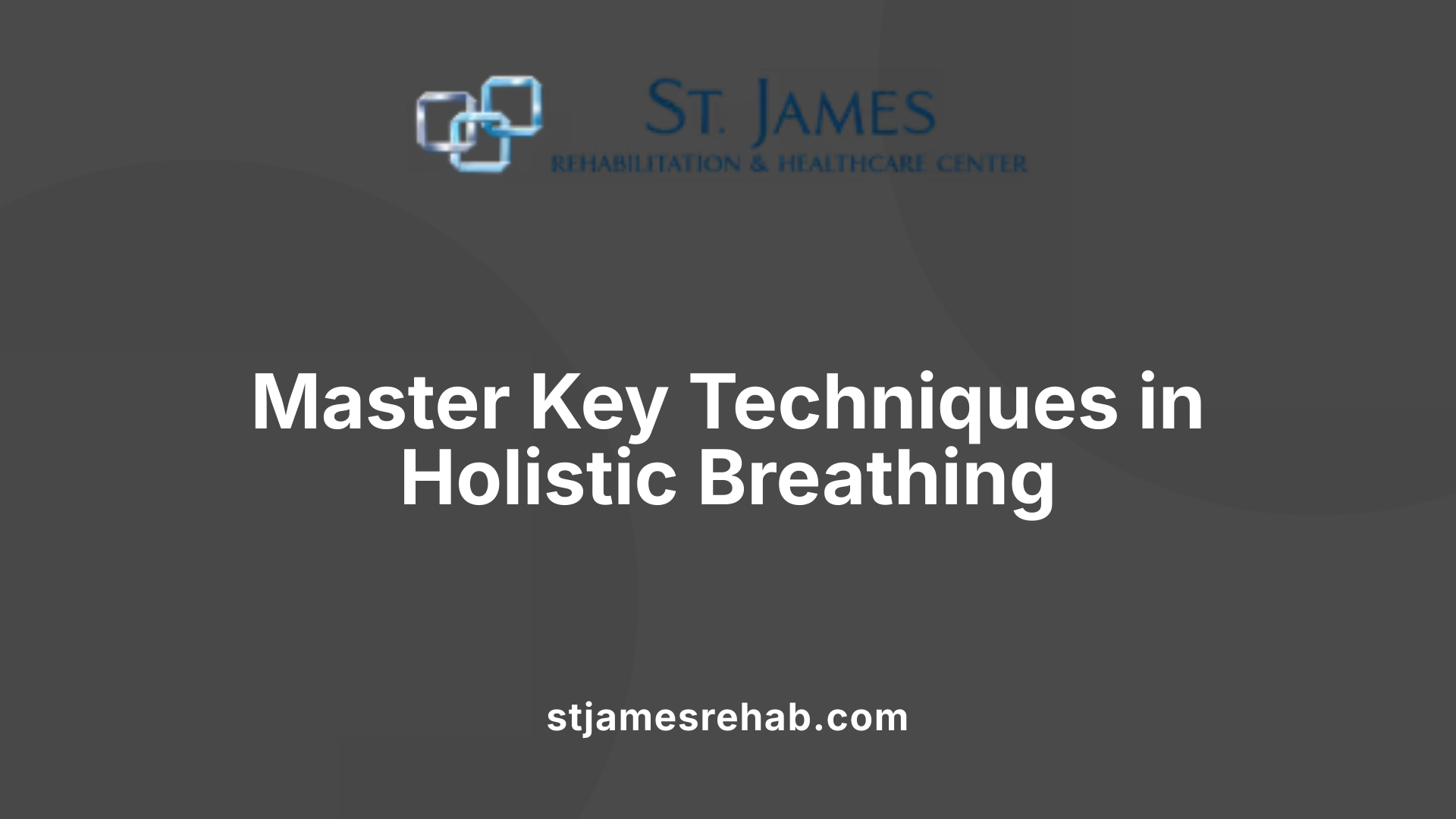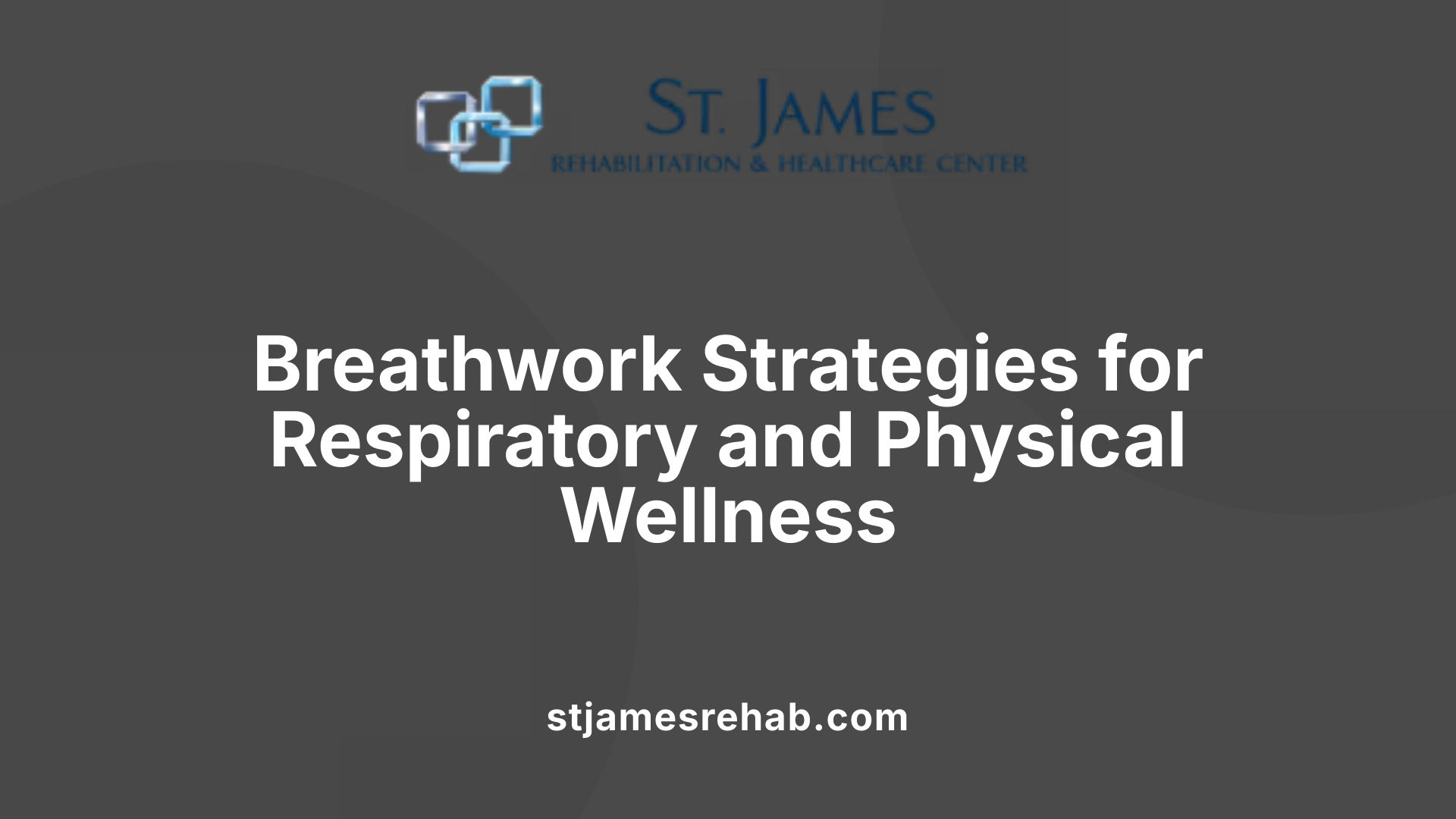The Role of Breathing Techniques in Holistic Rehabilitation
Harnessing Breath for Lasting Recovery and Well-Being

Unveiling the Power of Breathing in Holistic Healing
Breathing techniques, once considered simple physiological activities, have gained recognition as potent tools in holistic rehabilitation. Rooted in ancient practices and supported by modern scientific research, these intentional breathing exercises influence emotional states, physical health, and mental clarity. By integrating various methods—such as diaphragmatic breathing, box breathing, and conscious connected breathwork—recovery programs now harness the power of breath to foster resilience, relieve stress, and promote long-term healing across mental, emotional, and physical domains.
The Benefits of Breathing Exercises for Mental and Physical Well-Being
What are the benefits of breathing exercises for mental health and overall well-being?
Breathing exercises provide a natural, accessible tool to improve both mental and physical health. They promote relaxation by activating the parasympathetic nervous system, which helps to calm the body's stress response and lower stress hormones like cortisol.
Regular practice can significantly reduce symptoms of anxiety and depression. Techniques such as diaphragmatic breathing, 4-7-8 breathing, and alternate nostril breathing have been shown through scientific studies to decrease anxiety and improve emotional regulation. These methods help soothe the nervous system, making it easier to manage emotional reactions and reduce feelings of tension.
In addition to mental health benefits, breathwork enhances physical health, particularly cardiovascular and respiratory functions. By improving oxygen intake and circulation, these exercises help lower blood pressure, boost heart health, and strengthen lung capacity. Deep breathing increases oxygen flow to the brain and vital organs, supporting overall vitality and resilience.
Breathwork also supports mindfulness, encouraging present-moment awareness and grounding, which are vital for emotional stability. As a result, people experience greater mental clarity, mood stabilization, and a sense of control over stressors.
In summary, integrating breathing exercises into your daily routine can dramatically elevate mental resilience and physical health. They serve as powerful tools for calming the mind, strengthening the body, and fostering a balanced, healthier life.
Scientific Foundations of Breathing in Holistic Healing

What scientific evidence supports the use of breathing techniques in holistic healing?
Scientific research robustly supports the role of breathing exercises in promoting holistic health by highlighting their impact on the body's physiology and neural pathways. Slow, deep breathing techniques, such as diaphragmatic breathing and box breathing, have been shown to increase heart rate variability (HRV) and respiratory sinus arrhythmia (RSA). These physiological markers are indicators of parasympathetic nervous system activation, which promotes relaxation and enhances resilience to stress.
Neuroimaging studies further reveal that controlled breathing modulates brain activity in regions like the prefrontal cortex and thalamus—areas involved in emotional regulation, focus, and internal awareness. Electroencephalogram (EEG) research supports these findings, demonstrating increased alpha wave activity associated with relaxation and decreased theta waves linked to calm mental states during slow breathing practices.
Meta-analyses of breathing interventions have consistently shown significant reductions in stress, anxiety, and depression symptoms across diverse populations. These findings confirm that breathwork can serve as a powerful adjunct in holistic health strategies, fostering emotional stability, cognitive clarity, and overall well-being.
Through these physiological and neural mechanisms, scientific evidence underscores breathwork's effectiveness in regulating the nervous system, optimizing cardiovascular health, and supporting mental health recovery.
Defining Holistic Breathwork and Its Therapeutic Roots

What is holistic breathwork?
Holistic breathwork is a therapeutic practice that involves deep, rhythmic breathing techniques, often guided by a trained practitioner, to promote physical, emotional, and mental healing. Its origins trace back to ancient traditions like yoga and shamanic rituals, which emphasize conscious breathing as a means of spiritual and bodily balance.
In modern therapy, breathwork has been adapted into structured approaches such as rebirthing and conscious connected breathing, focusing on releasing stored emotions, reducing stress, and fostering overall well-being. Sessions typically involve lying down in a calm environment while engaging in specific breathing patterns, sometimes accompanied by music, visualization, or meditation exercises to deepen the connection with one’s breath.
This practice targets not just physical health but also emotional regulation, trauma recovery, and mental clarity. It encourages a mind-body connection that can help individuals process emotional blockages and promote a sense of inner peace.
Holistic breathwork is considered safe when performed with proper guidance, whether in person or through virtual sessions. It is used to address various health concerns, including anxiety, trauma, sleep issues, and chronic pain. Overall, it offers a natural, accessible way to enhance physical health, emotional resilience, and spiritual growth, supporting long-term wellness.
Methods and Techniques in Holistic Breathing Practice

What are some common methods and techniques of breathing exercises used in holistic practices?
Holistic breathing exercises utilize various methods to foster relaxation, clarity, and overall health. Among the most popular are diaphragmatic breathing, also called belly breathing, which emphasizes slow, deep inhalations through the nose, engaging the diaphragm to promote calmness and oxygen flow.
Structured exercises such as Box Breathing and the 4-7-8 technique are widely used for their stress-relieving benefits. Box breathing involves inhaling, holding, exhaling, and holding again, each for about four seconds, creating a rhythm that calms the nervous system. The 4-7-8 method, developed by Dr. Andrew Weil, guides practitioners to inhale for four seconds, hold for seven, and exhale for eight, encouraging relaxation.
Alternate nostril breathing, known as Nadi Shodhana, balances the nervous system by alternating the airflow between nostrils using a simple finger technique. This practice improves focus and reduces stress.
Mindful breathing involves paying close attention to the breath, observing each inhale and exhale without judgment. Resonant breathing, which involves slow, rhythmic breaths at about five breaths per minute, can lower blood pressure and enhance emotional regulation.
Additionally, practices like laughter therapy and gentle yoga breathing integrate physical movements with breathing to boost mood and transcendental relaxation. These methods collectively contribute to a holistic approach, supporting mental clarity, emotional balance, and physical health.
Breathing Techniques and Their Roles in Physical Health and Respiratory Conditions

How do breathing techniques contribute to physical health and respiratory conditions?
Breathing exercises such as diaphragmatic and pursed-lip breathing are powerful tools in promoting physical health and managing respiratory issues.
These techniques help increase lung capacity and improve airflow, which is crucial for conditions like asthma, COPD, and long COVID. By focusing on slow, deep breaths, individuals can enhance oxygen exchange and reduce feelings of shortness of breath.
In addition, controlled breathing promotes relaxation and reduces stress levels, which can improve symptom management and overall well-being. For instance, diaphragmatic breathing strengthens the diaphragm and boosts respiratory muscle strength, supporting more efficient breathing.
In rehabilitation settings, these exercises are incorporated into programs similar to cardiac rehab, aiming to establish lifelong habits that promote respiratory health. Regular practice can lead to better symptom control, decreased fatigue, and improved quality of life.
Breathwork strategies also support the natural clearing of mucus and reduction of inflammation in the airways, helping to ease symptoms associated with chronic respiratory diseases. Overall, these techniques serve as accessible, non-invasive interventions that empower patients to take an active role in maintaining their respiratory health.
Healing and Relaxation Techniques with Breathing
What specific breathing techniques are recommended for healing and relaxation?
Several breathing practices have been scientifically supported for their calming effects and healing benefits. Among the most popular are diaphragmatic breathing, alternate nostril breathing, 4-7-8 breathing, and resonant breathing.
Diaphragmatic breathing, also known as belly breathing, involves taking slow, deep breaths that expand the lower lungs and activate the parasympathetic nervous system. This technique helps reduce heart rate, lower cortisol levels, and promote a state of relaxation — essential for healing and stress reduction.
Alternate nostril breathing, or Nadi Shodhana, is used to balance the brain's hemispheres and improve cardiovascular health. By breathing through one nostril at a time, practitioners can calm the nervous system and foster emotional stability.
The 4-7-8 breathing technique acts as a natural sedative. It involves inhaling for four seconds, holding the breath for seven seconds, then exhaling slowly for eight seconds. This pattern slows the nervous system, reduces anxiety, and is particularly effective before sleep.
Resonant or coherent breathing, which typically involves inhaling and exhaling to a count of five or six seconds, helps maintain a steady heart rate and fosters a deep sense of calm.
By integrating these controlled and deliberate breathing techniques into daily routines, individuals can significantly decrease stress levels, improve mood, and support physical and emotional healing. Regular practice enhances resilience against stress and cultivates a sense of well-being.
Integrating Breathwork in Broader Holistic Health Frameworks
Breathwork is more than just a set of breathing exercises; it is a vital component of holistic approaches to health that encompass mind, body, and spirit. These intentional breathing practices often work in harmony with meditation, movement, and other mind-body techniques to promote overall well-being.
Within broader frameworks, breathwork helps activate the parasympathetic nervous system—the body’s natural relaxation response. This activation reduces stress hormones like cortisol, alleviates anxiety, and fosters emotional calmness. Techniques such as diaphragmatic breathing, alternate nostril breathing, and paced breathing are particularly effective in stimulating vagal pathways, which play a crucial role in managing emotional and physiological states.
Incorporating breathwork into daily routines supports emotional stability by resetting physiological responses. This grounding effect enhances resilience against daily stressors and contributes to better sleep quality. It also complements movement practices like yoga and Tai Chi, which further strengthen the mind-body connection by integrating breath with physical postures and mindful awareness.
When integrated thoughtfully, breathwork enhances mental clarity, decision-making, and overall cognitive function. It fosters emotional balance, supports trauma recovery, and assists in managing chronic health conditions. By serving as a natural, accessible tool, breathwork enriches holistic health models designed to promote interconnected physical, mental, and emotional health.
In summary, breathwork’s role within holistic health frameworks lies in its ability to synchronize physiological and psychological processes. It acts as a bridge connecting inner emotional states with physical health, leading to sustained resilience, improved sleep, and a balanced, healthier life.
Breathwork's Role in Addiction Recovery, Trauma Healing, and Stress Management
How can breathing exercises aid in addiction recovery, trauma healing, and stress relief?
Breathwork offers a powerful, non-addictive tool that supports recovery from various mental health challenges, including addiction and trauma. Techniques such as trauma-focused breathwork, box breathing, and practices inspired by the Wim Hof Method help individuals release stored emotional pain and trauma. These methods activate the parasympathetic nervous system, which promotes relaxation and emotional calm, essential for processing difficult memories.
By encouraging deep, mindful breathing, these exercises facilitate emotional catharsis—the process of expressing and releasing pent-up feelings—helping to alleviate symptoms like anxiety, flashbacks, and stress. Regular practice can recalibrate the body's physiological responses, reducing stress hormones and fostering resilience.
Furthermore, breathwork enhances the connection to one’s subconscious and often facilitates a sense of spiritual connection or connection with a Higher Power, which can be vital in many recovery models. This connection encourages surrender, acceptance, and trust in the healing process.
Research indicates that sustained, consistent inhalations and exhalations through various breathwork modalities can lead to long-term personal growth and emotional stability. This holistic approach, integrated within treatment plans, supports individuals in managing cravings, gaining mental clarity, and developing healthier emotional responses.
Incorporating these practices into daily routines—either independently or with professional guidance—can foster ongoing resilience and emotional well-being. Used effectively, breathwork acts as a complementary, safe, and empowering modality for those on the path to recovery, helping to facilitate shifts at both physical and emotional levels.
Breathing as a Cornerstone of Holistic Healing
Incorporating breathing techniques into holistic rehabilitation offers a versatile, scientifically supported approach to fostering mental clarity, emotional resilience, and physical health. Whether it’s managing stress, alleviating pain, supporting respiratory health, or aiding trauma and addiction recovery, breathwork provides accessible, natural tools that empower individuals on their healing journey. As research continues to uncover the profound impact of mindful breathing on the nervous system and overall well-being, it becomes clear that harnessing the power of breath is an essential pillar of holistic health—one that promotes deeper self-awareness, resilience, and sustainable recovery for diverse health conditions.
References
- The Role of Breath Work in Holistic Mental Wellness
- The Power of Breathwork in Addiction Recovery
- Breathing Techniques for Pain Management | Orthopaedics Toronto
- A Systematic Review of Breathing Exercise Interventions - PubMed
- 10 Breathing Techniques for Stress Relief - Healthline
- The Healing Breath: A Holistic Approach to Stress Relief and ...
- Holistic Mental Health Approach: Breathing!
- Effects of Breathwork in Addiction - Delamere Health






